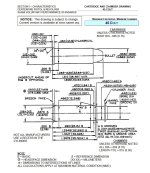There are times when I get frustrated with "SAAMI specs" or "SAAMI says..." though it probably not so much SAAMI but people's interpretation of what they see written.
One factor is that SAAMI dimension specs include the tolerances. If you look at the document Uncle Nick downloaded, you find the case length to be
"1.285 - .020"
Now, as I understand it (and, PLEASE correct me if I am wrong) this indicates a maximum length of 1.285" with cases up to .020" shorter being allowable.
And these are specs for ammo and gun MAKERS.
Our loading manuals take a slightly simpler approach, giving the listed max length, only.
Adding to the confusion is the fact that you will almost never get new brass or loaded ammo that reaches the listed max lengths. It is almost always shorter than the industry max spec. And, this is intentional. By being under listed max dimensions it helps ensure their round will fit into all the chambers it may likely encounter.
It is not a flaw, its a "feature" and along with chambering, it also helps ensure that any case stretch during firing will not create an immediately dangerous situation.
When working with straight case rimmed rounds the exact case length (below listed max length) is only a critical measurement when you are loading the brass, not when chambering or firing. A little short makes a difference when flaring, seating and crimping, but not once its in the gun.
Think .38 Special and .357 Magnum, for a common example. There are several combinations of cartridges where they are essentially the same size, other than length. Most are revolver rounds, but not all.
.22 Short, .22 Long, and .22LR are another example. ALL guns chambered for the LR will chamber and fire the shorter rounds. Many will also FEED the shorter rounds, but some will not due to the design of their feed systems.
You are entirely right to ask the question, as it seems like something isn't right. But it is, and of no concern USING short cased ammo in your guns. It is only a concern when you are reloading the brass, and there are ways to deal with that, which I've already mentioned.
Hope this helps, make things clear as mud now right?


